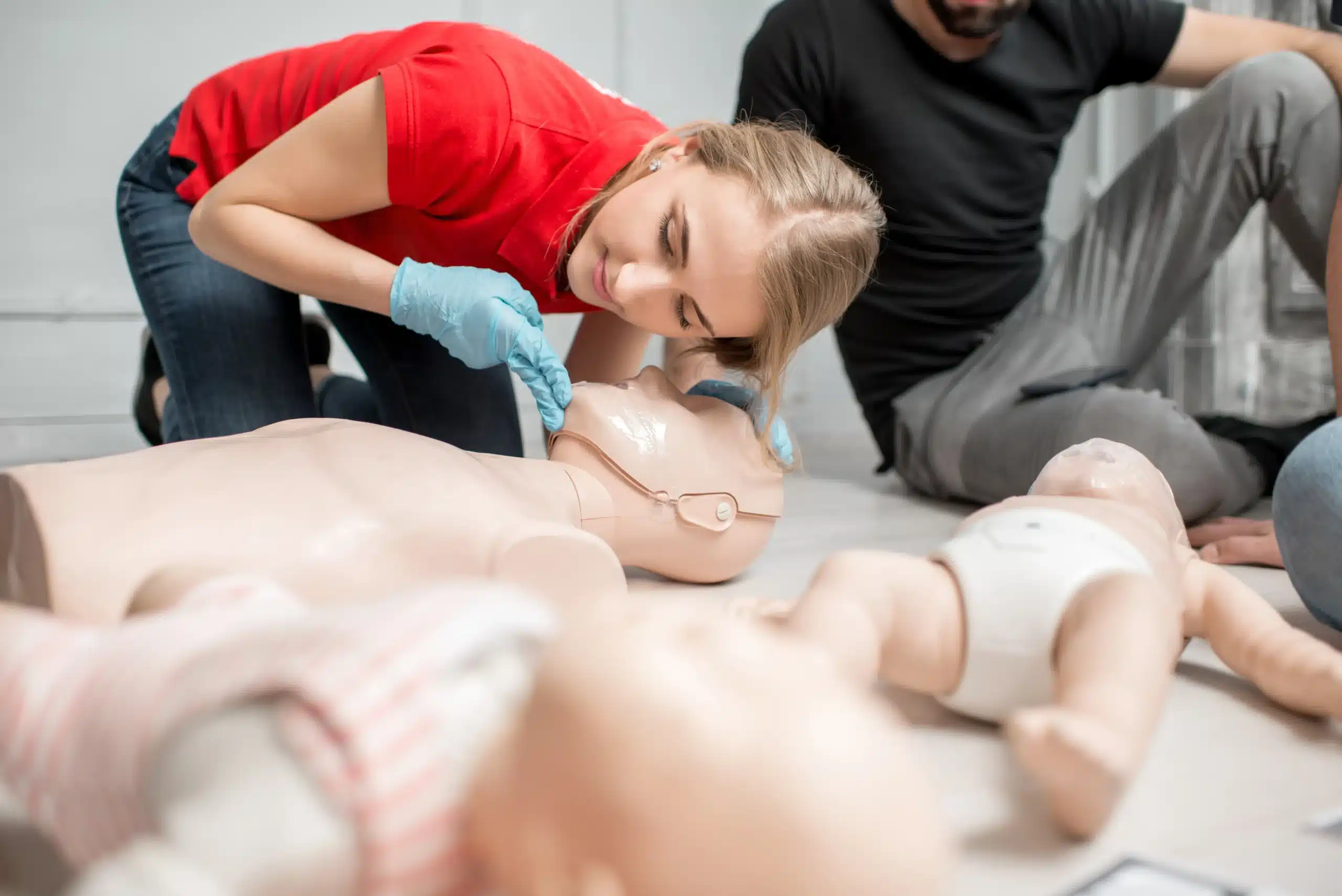Cardiopulmonary Resuscitation (CPR) is a life-saving procedure that plays a crucial role in emergencies, from hospitals to homes. Its importance cannot be overstated—it often serves as the difference between life and death during cardiac or respiratory events. Whether you’re a healthcare professional or a bystander witnessing a sudden cardiac arrest (SCA), knowing CPR could save a life.
This blog explores CPR’s definition, historical development, and its role in saving lives. We’ll also cover its significance in healthcare, the steps for certification, and common misconceptions. By the end, you’ll understand why CPR is a critical skill that everyone—especially healthcare professionals—should possess.
Key Takeaways
- CPR Saves Lives: Its importance lies in preventing brain death and improving survival chances.
- Wider Applicability: From healthcare professionals to bystanders, CPR is for everyone.
- Training Matters: Regular certification ensures preparedness and effective responses.
What Is CPR and Its Role in Healthcare?
Definition of CPR
CPR stands for Cardiopulmonary Resuscitation. It is an emergency procedure performed when someone’s heart or breathing stops. The primary goal of CPR is to restore circulation and oxygen flow to the brain and other vital organs until advanced medical care can be provided.
The Process of CPR
CPR involves two key techniques:
- Chest Compressions: Delivering rhythmic, firm compressions to the chest to manually keep blood circulating.
- Rescue Breaths: Providing mouth-to-mouth breathing to get oxygen into the lungs.
The American Heart Association (AHA) emphasizes the importance of chest compressions over rescue breaths for laypersons, as compressions alone can still improve survival rates.
Why CPR Is Crucial
- Prevents Brain Death: Brain cells begin to die within minutes of oxygen loss. CPR delays this process by maintaining blood flow.
- Universal Applicability: CPR is indispensable in scenarios ranging from healthcare settings to community emergencies.
The History of CPR
Early Beginnings
The concept of resuscitation dates back to the 17th century with techniques like “mouth-to-mouth” resuscitation being mentioned in medical literature.
Key Milestones
- 1950s: Mouth-to-mouth resuscitation was formalized by Drs. Peter Safar and James Elam.
- 1960s: The American Heart Association introduced modern CPR guidelines.
- 1970s: Automated External Defibrillators (AEDs) were introduced to complement CPR efforts.
Over time, advancements in research have refined CPR methods, improving survival rates during emergencies.
Importance of CPR in Saving Lives
Hard-Hitting Data
The statistics on sudden cardiac arrest are staggering. The AHA reports that:
- Approximately 350,000 out-of-hospital cardiac arrests occur annually in the U.S., and nearly 70% happen at home.
- Bystander CPR can double or even triple survival chances, yet only 40% of cardiac arrest victims receive it.
The Chain of Survival
The “Chain of Survival” highlights five crucial steps:
- Recognizing cardiac arrest and activating emergency response.
- Early CPR.
- Rapid defibrillation.
- Advanced medical care.
- Post-cardiac arrest care.
CPR is the essential second link, bridging the gap between recognition and advanced care.
Bystander Impact
Timely intervention by a bystander with CPR can dramatically improve outcomes. It doesn’t require perfection—any attempt is better than none.
The Role of Healthcare Professionals in CPR
Healthcare workers are the frontline defenders in emergencies, making CPR a mandatory competency.
Why Competency Matters
- Preparedness: Mastery of CPR ensures readiness in unexpected situations.
- Effectiveness: Regular training improves technique, ensuring high-quality compressions and breaths.
Professionals Who Should Be Proficient
- Doctors and Nurses: Often first responders in hospitals.
- Paramedics and EMTs: Provide emergency care in pre-hospital settings.
- Administrators: While less hands-on, CPR training helps leaders understand protocol.
CPR Training and Certification
Steps to Certification
- Enroll in a Course: Choose an AHA-approved training provider like Safety Training Seminars.
- Complete Training: Participate in hands-on instruction and online modules.
- Pass Assessment: Earn CPR and First Aid, Basic Life Support (BLS), Advanced Cardiac Life Support (ACLS), or Pediatric Advanced Life Support (PALS) certification.
Why Everyone Should Be Trained
CPR training isn’t just for healthcare workers—it’s essential for everyday citizens. Emergencies can happen anywhere, and the more people trained, the better the outcomes.
Debunking Myths About CPR
The media often portrays CPR as miraculous, leading to widespread misconceptions. Let’s shed light on some common myths:
Common Misconceptions
- Myth 1: “Only professionals should give CPR.”
Truth: Anyone can perform CPR—it’s better to try than do nothing.
- Myth 2: “You can hurt someone by doing CPR wrong.”
Truth: Potential injuries like cracked ribs are minor compared to saving a life.
Take Action Today
Whether you’re a healthcare worker or a compassionate bystander, learning CPR is a responsibility. Consider becoming certified through reputable providers in Santa Rosa like Safety Training Seminars. We offer AHA programs in CPR & First Aid, BLS, ACLS, and PALS.
Motivate your organization to prioritize CPR training for all staff—it could save a life.






